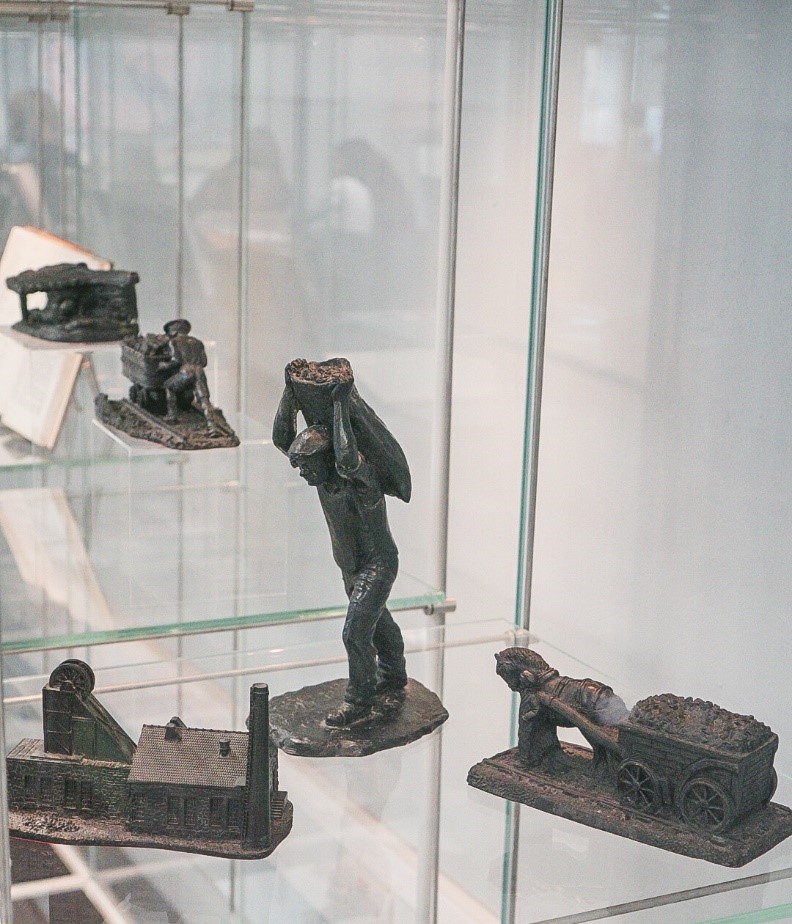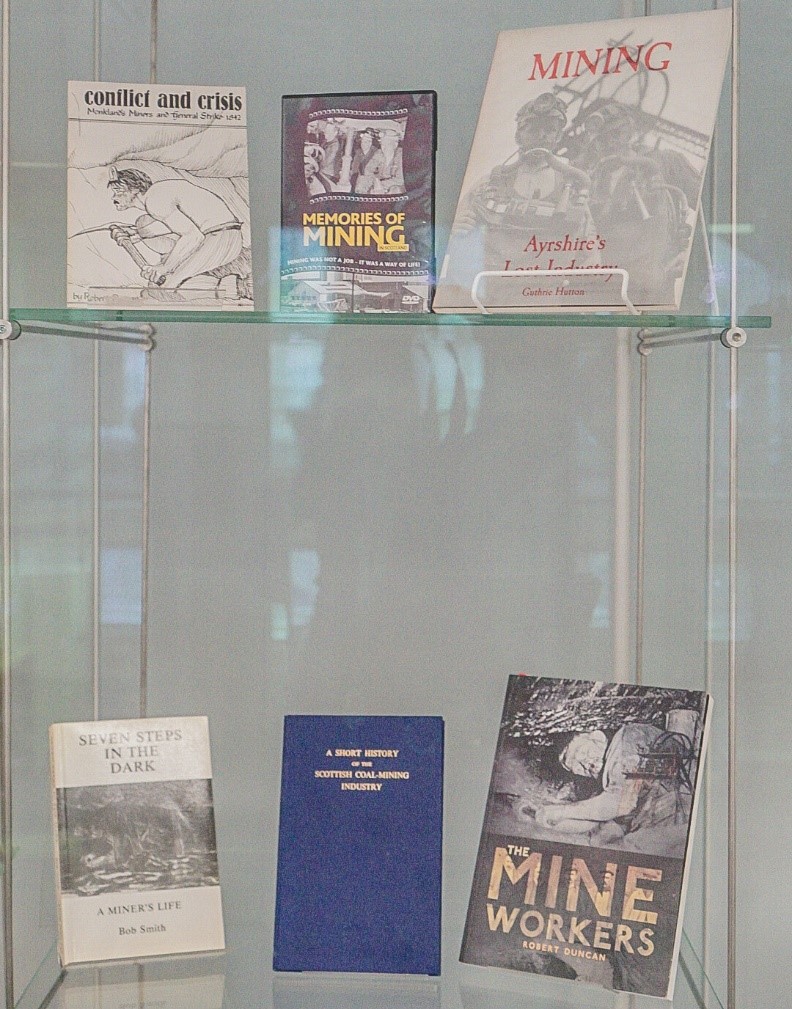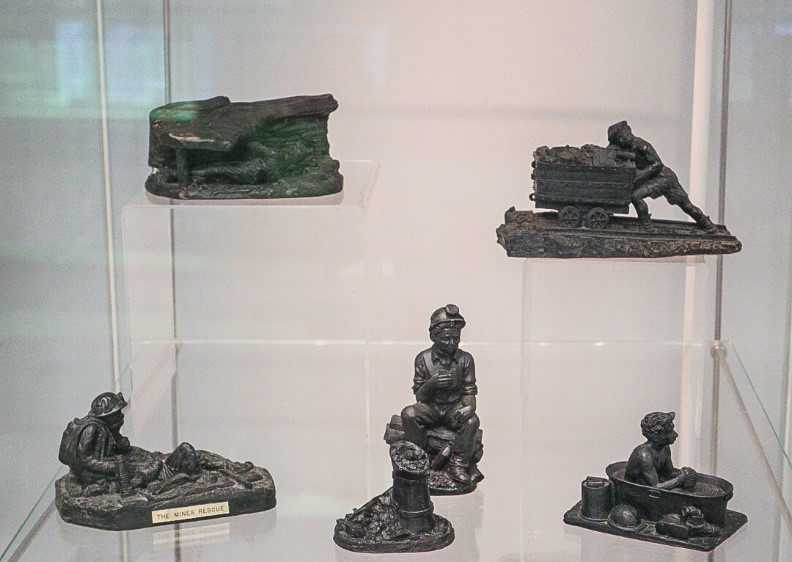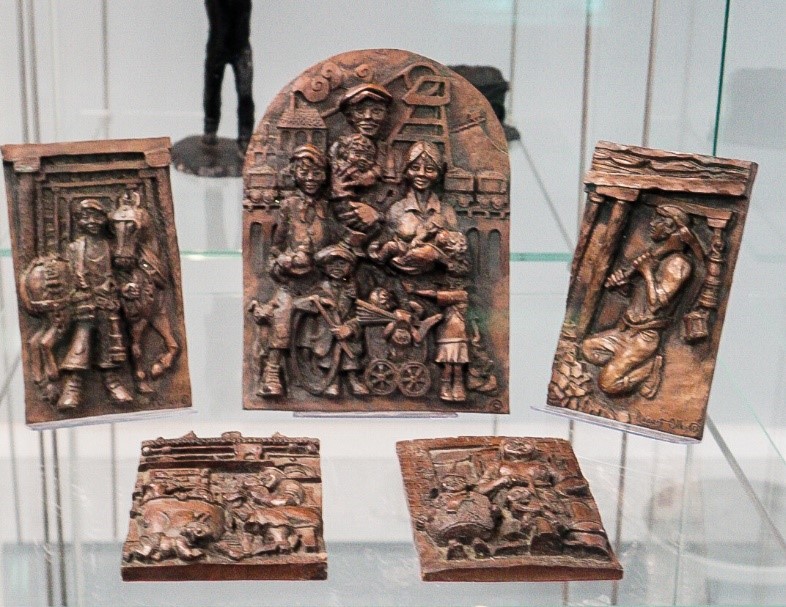We have a new display on the mezzanine level of Central Library, kindly collated by Yvonne McEwan. It focuses on the lives of the workers of the Polkemmet Colliery, near Whitburn West Lothian, and their lost way of life when the mine was closed.
The colliery first had its pit shafts dug out in 1913 and as the pit was finished in 1916 it was named after the Dardanelles Campaign of the same year. It began production in 1921 and employed on average 1,496 people during its active years. The colliery grew further after opening when a canteen and Art Deco inspired baths were built in 1937. Workers were now supplied hot bathing water, lockers for clean clothes and drinking fountains. The baths, the second largest in Scotland, would have improved the lives of the women at home too, as even though their homes nearby had water, it was not always hot.
Polkemmet was the largest and last of West Lothian’s collieries at 4.9km and was the deepest pit in Scotland. It produced high quality coking coal which in later years was the main source of supply for the Ravenscraig steel works in Motherwell.
In 1984-85 miners from all over the United Kingdom attempted to stop the National Coal Board (NCB) and the government shutting down collieries by striking. Previously miners had prevented closures by doing this and it was hoped that they would be able to influence Government again. However, the government anticipated the industrial action and stockpiled coal beforehand.
The National Union of Mineworkers withdrew safety cover in 1985 and in response the Scottish Area of the National Coal Board switched off the power for the pits’ water pumps. Polkemmet Colliery suffered severe flooding and all the equipment left underground was damaged as a result. Several members of Polkemmet Colliery’s staff went back to work as they realised the flooding, and thereby the condition of the mines, would be detrimental to their future jobs.
Nonetheless, not enough staff did return and by the end of the strikes the pit never reopened. The National Coal Board concluded that the cost of pumping the pit clear of water as well as the cost to drive new tunnels to reach the coal made the pit financially unviable. Between 800 and 900 people had to take redundancy and 350 were transferred to other pits by 1986.
The display shows photographs of the mines’ waste material that was abandoned when the pit closed. This is in sharp contrast to the information and sculptures of the life of the miners when the colliery was functioning.
The exhibition comprises of several book collections, for example books on the first aid competitions that miners took part in, books about their everyday lives and also some focusing on the dangers they faced.
The display also exhibits lamps used in the mines.
The items on show convey the breadth of experiences faced by those that worked in and around the mine. You can find first aid competition books, a newspaper cutting from the 1971 Miners Gala as well as several coal carvings showing the daily life of miners, whether it’s eating lunch or taking a bath.
There are also a number of cold cast resin sculptures by Robert Olley depicting everyday life in mining families.
However, the display does not shy away from the cold reality of the dangers and difficulties associated with life in the mines. Several carvings depict the physical pressures on the miners and the ponies.
There is also a newspaper on display which highlights Yvonne’s concerns about the depression of the ex-miners and their physical deterioration following their redundancies.
The exhibition will be on the Mezzanine level of Central Library until the end of June. Come in and have a browse!






Yvonne was nurse at Polkemmet remember her well
I have Ayrshire book also Lanarkshire one
LikeLike